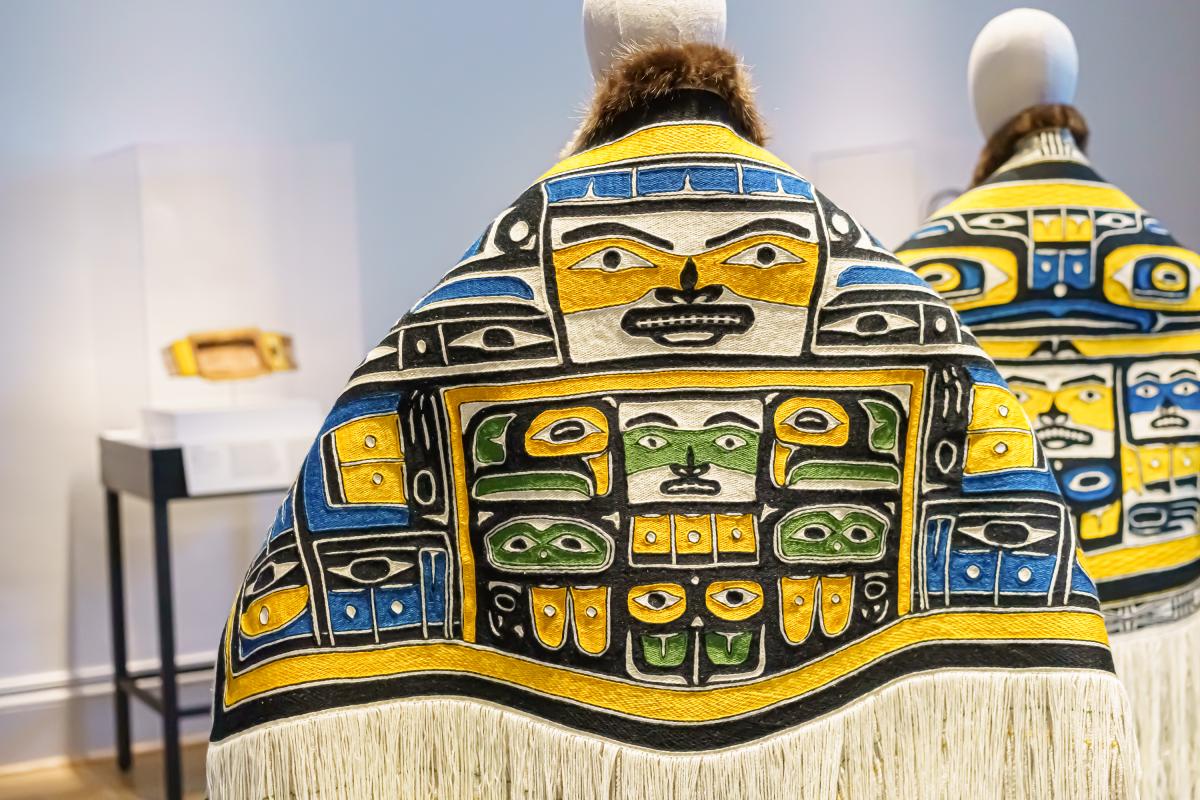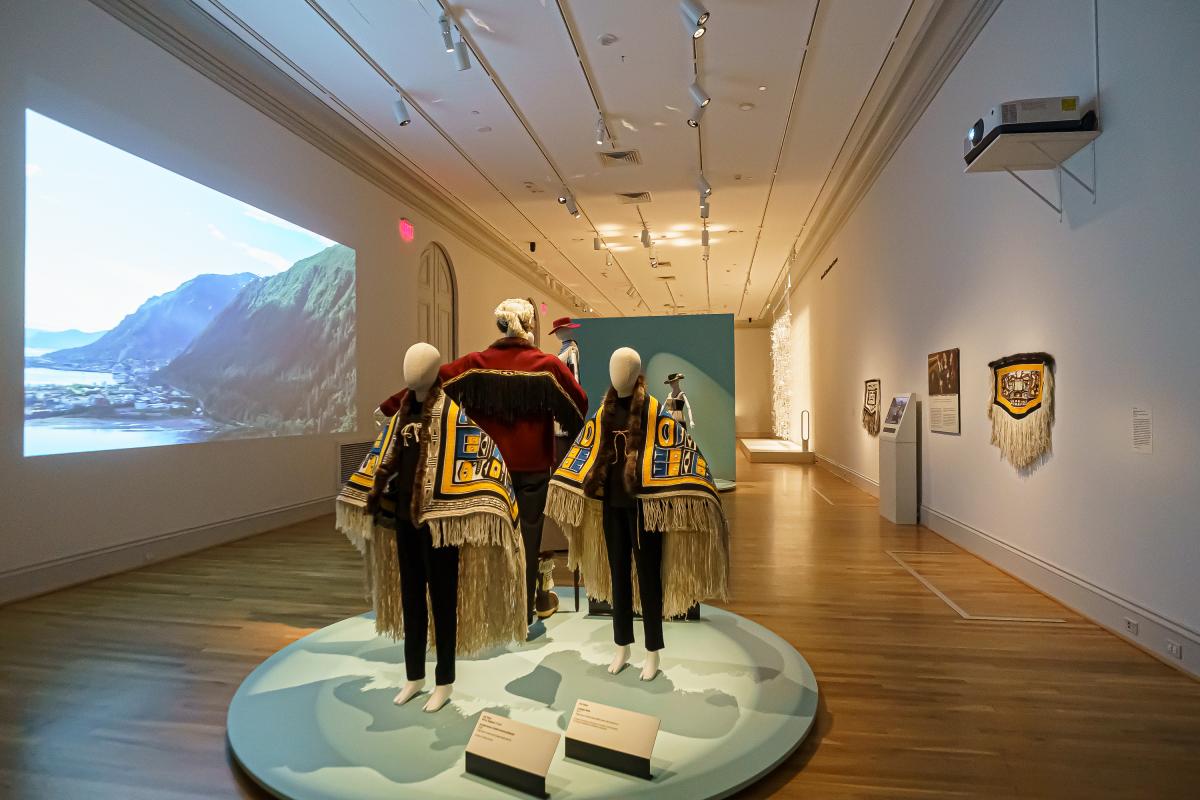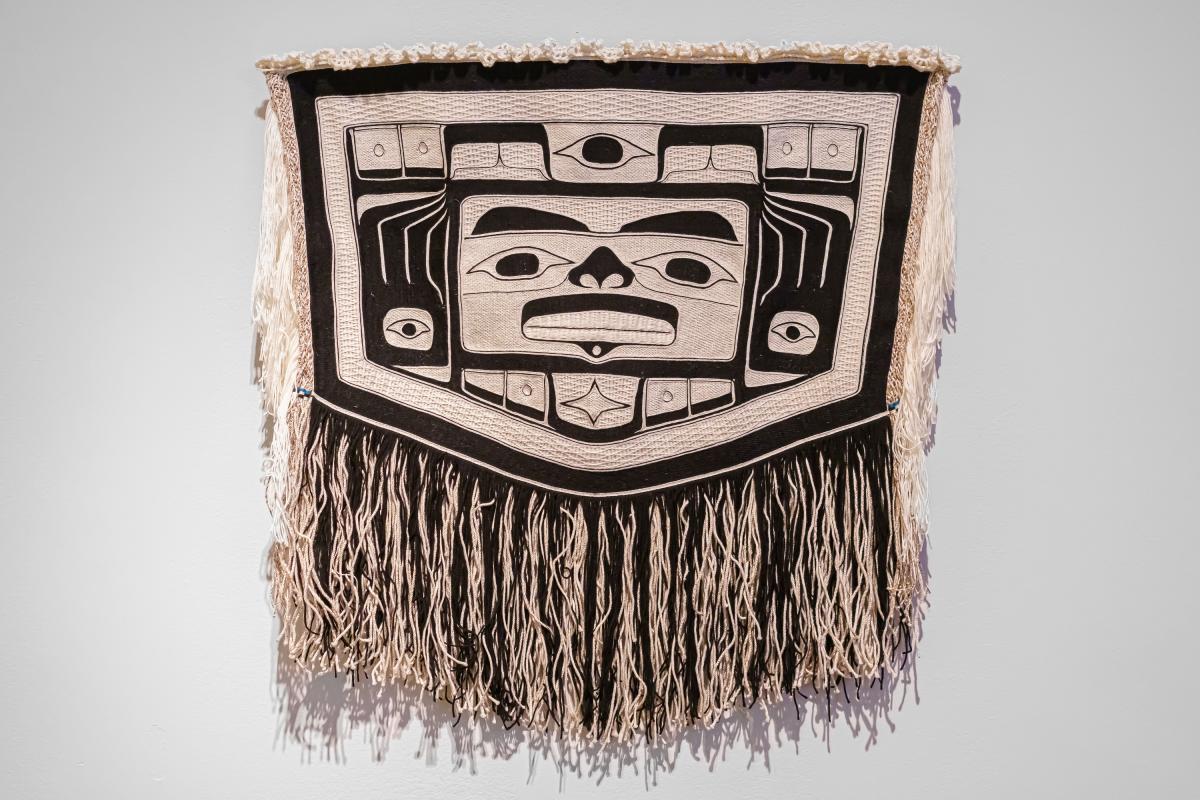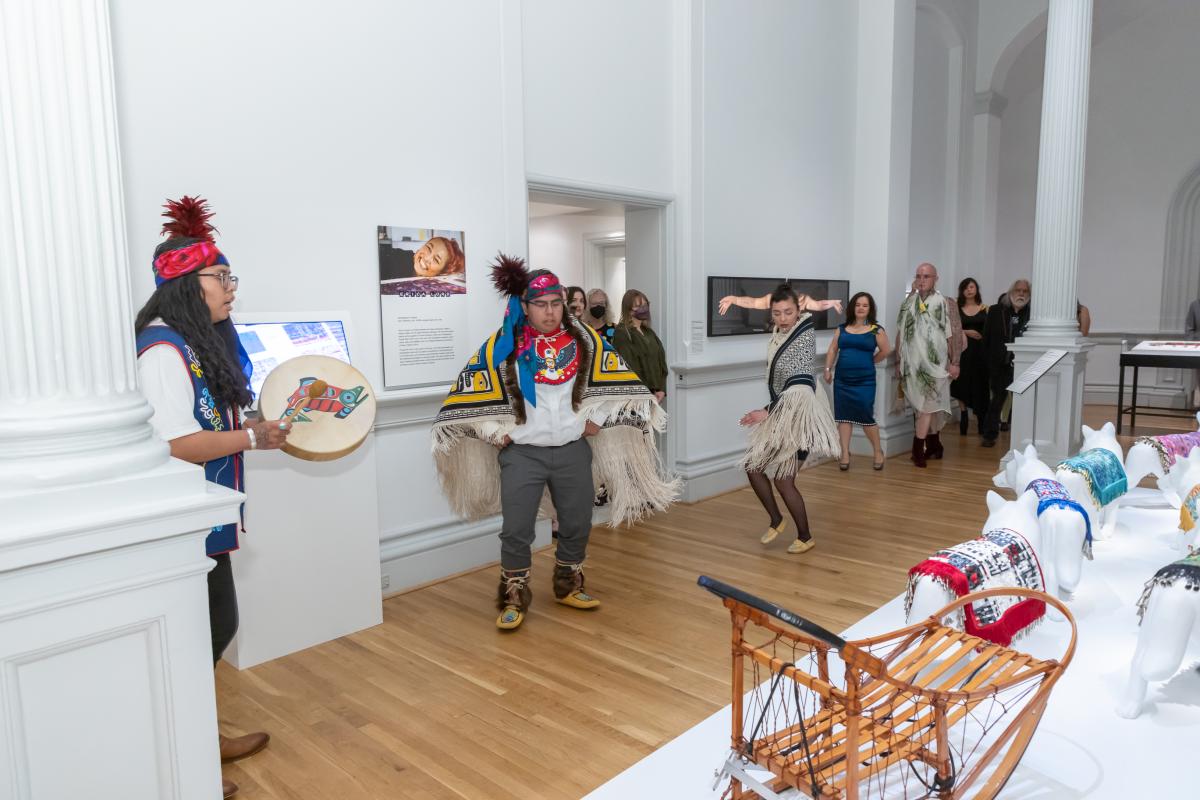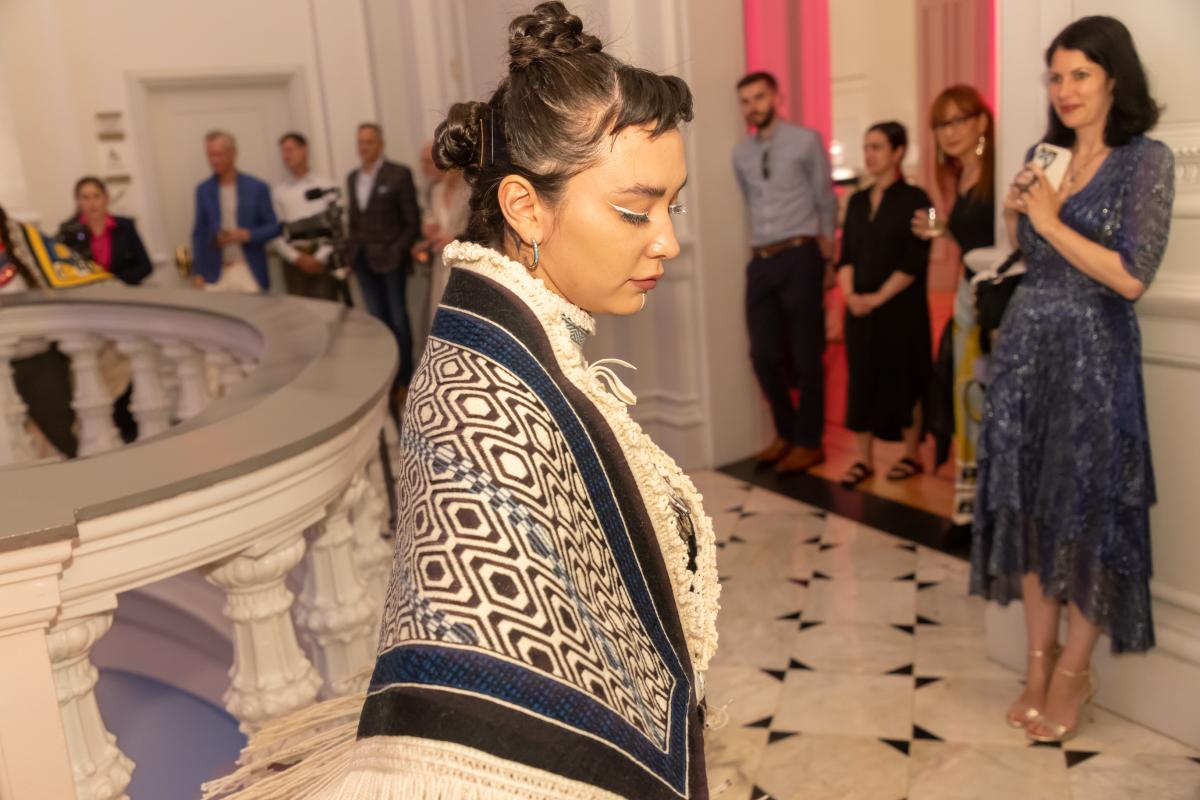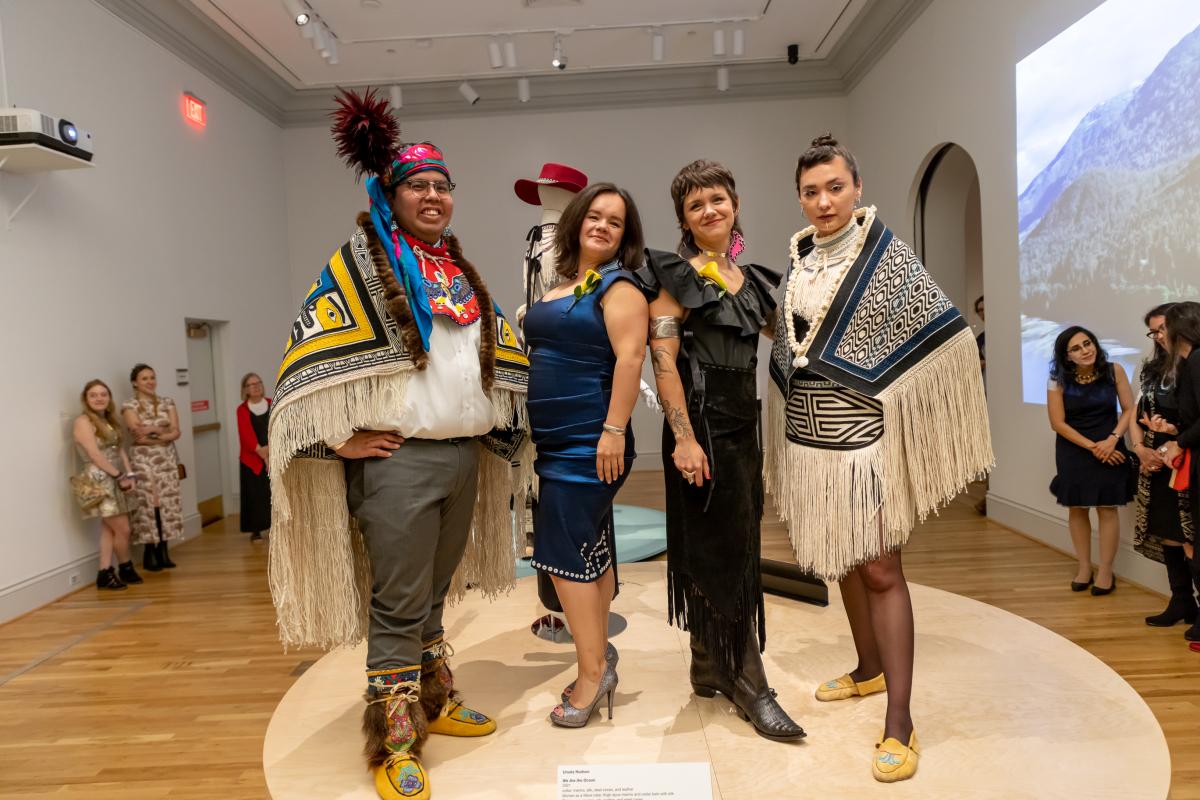Tlingit sisters Lily Hope and Ursala Hudson were trained in Ravenstail and Chilkat weaving by their mother, renowned weaver Clarissa Rizal (1956–2016). To the untrained eye, Ravenstail and Chilkat weavings may appear similar, but the techniques can be distinguished by design: Chilkat weavings typically feature curving formline shapes, while Ravenstail weavings employ geometric designs. Formline design is a highly developed pictorial system using ovoids and U-shaped elements to represent animals, humans, and other beings. Many formline designs belong to clan crests and carry specific rights and responsibilities. It takes extensive understanding of the design principles to create works that do not overstep permissions. The curving lines in formline designs are technically challenging to transform into weaving.
These weaving traditions produce garments for use in ceremonial practices by high-ranking members of Haida, Tsimshian, Tlingit, and other Northwest Coast Indigenous Peoples of Alaska and western Canada. Such textiles take hundreds of hours to make and years of training, research, perseverance, and dedication to master.
Lily Hope’s works respond to societal issues with care and emphasize the need to pass knowledge along to future generations of weavers. Ursala Hudson’s work explores the delicate balance between custom and innovation by combining Ravenstail and Chilkat techniques with a high fashion sensibility. Hudson describes her work as, “ceremonial regalia for the globalized yet indigenous-spirited warrior woman—her heart with the ancestors and her mind on the future.” Their works reflect clan relationships, gendered labor, and the Tlingit values of reciprocity and balance.
In Sharing Honors and Burdens: Renwick Invitational 2023, Lily Hope’s Double Raven Chilkat blanket and Ursala Hudson’s Sister Bear blanket are both on display. According to jurist Anya Montiel’s catalogue essay, Hope’s work represents honoring ancestors through the act of weaving or a spiritual connection.
As Hudson’s first Chilkat robe, Sister Bear incorporates her own innovative twist, using black and white exclusively for the design and omitting the classic combination of yellows, greens, and black that has come to define Chilkat aesthetics. The design is a female bear, as signified by her labret, a customary piercing worn by women and girls. This bear holds the enormity of inherited experiences and knowledge from all her different bloodlines and accepts that this future looks unlike any other.
On opening night, Lily Hope and Ursala Hudson performed a weaving demonstration, where attendees watched a procession led by Tlingit dancers and performers around the Renwick Gallery to inaugurate the exhibition. Bringing to the forefront sacred ceremonies of Alaskan Natives meant the museum continues to uphold its pledge to promote Alaskan Native and Indigenous voices at a national level. These photos represent a meaningful night for all who attended, with models wearing Hudson’s We Are The Ocean (2021) and Hope’s Double Raven Chilkat Dancing Blanket (2020) and the procession. The last photo shows artists Hope and Hudson with the two models in the galleries.
Based on text created for SAAM’s special exhibition Sharing Honors and Burdens: Renwick Invitational 2023. Katie Hondorf contributed to this story.














